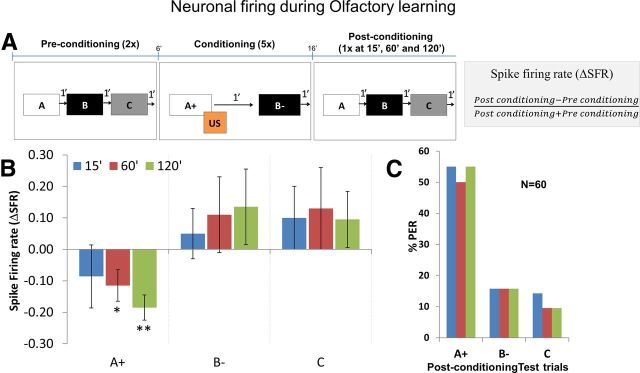Figure 5.
A, Olfactory learning protocol. Preconditioning phase: bees were presented twice with odors A, B, and C. Conditioning phase: odor A was presented together with a sugar reward (US), whereas odor B was no reward comprising one conditioning trial. Bees were subjected to five such trials. Postconditioning phase: similar stimulus conditions as in the preconditioning phase but without any reward (extinction trials). The extinction trials were presented 15, 60, and 120 min after the last conditioning trial. The change in neuronal response was measured by calculating the ΔSFR (see equation) and is expressed as change in firing rate from preconditioning phase to postconditioning phase divided by total firing rate. B, Change in neuronal response calculated as ΔSFR toward the rewarded odor A was reduced at 60 and 120 min after differential conditioning (two-way repeated-measures ANOVA: 60 min, p < 0.05; 120 min, p < 0.01; overall effect, F(2,177) = 335.4). Firing rate toward odors B and C was slightly increased, but this effect was not significant. Plots show average ΔSFR for each group, and error bars represent SEM. C, Plot showing percentage PER toward rewarded odor A+, unrewarded odor B−, and neutral odor C. Cochran's Q test: 15 min, Q = 46.08, df = 2, p < 0.01; 60 min, Q = 41.33, df = 2, p < 0.01; 120 min, Q = 48.67, df = 2, p < 0.01).

